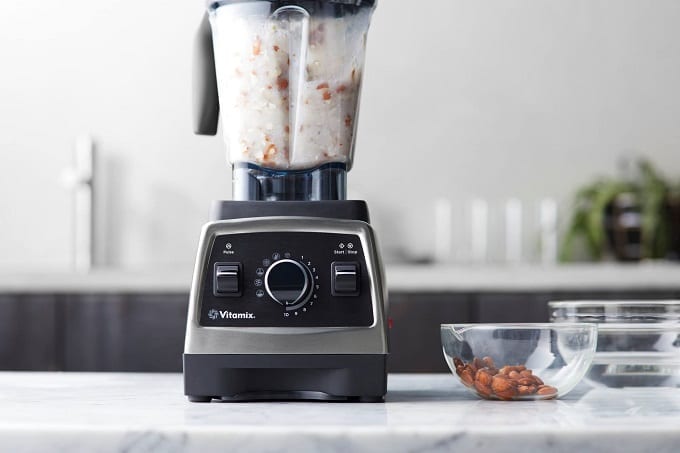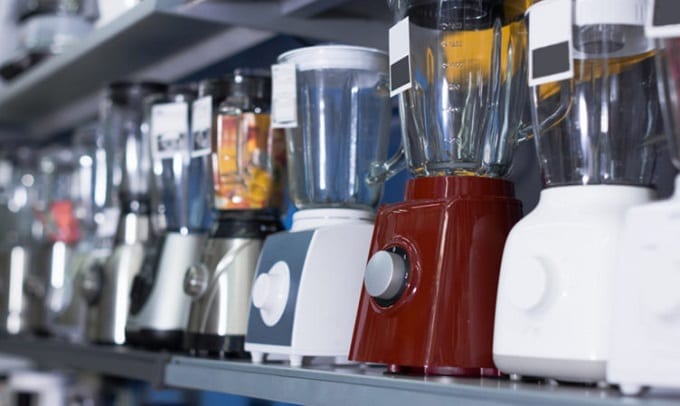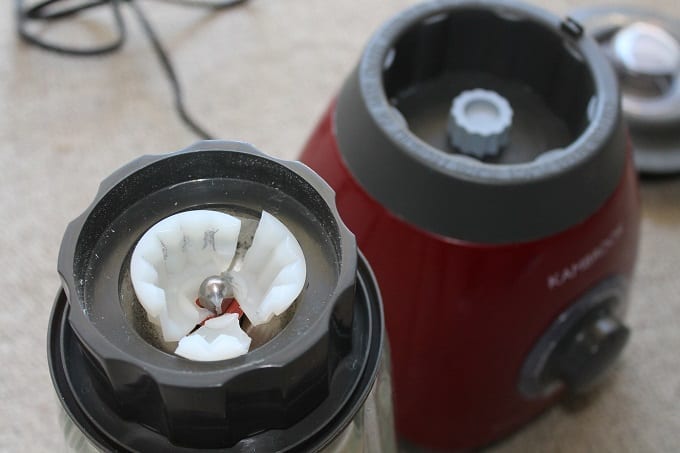Refurbished blenders give you an opportunity to save some serious cash while shopping for a high-end blender.
When you want a Vitamix or a Ninja blender, there’s a sizable price tag attached to it—you get a blender that’s set to last ten to twenty years, but it’s still a large upfront investment.
We’re here to discuss if refurbished blenders are even worth the hassle, or if you should bide your time and just get a new version of whichever model you’ve got your eye on.
The conversation usually stops at, “Well it’s been used, so it might not last as long,” but there’s far more to it than that. Let’s dive in.
What Are Refurbished Blenders?

You can either refurbish them yourself, or get renewed returned items from manufacturers, but a refurbished blender is basically restored from its previous state.
This could either mean that you’ve fixed a blender that didn’t work anymore, or a manufacturer had a blender returned to them for various reasons, adjusted it to meet the same specifications as their new models, and marked it down (and labeled it) to put out for sale.
A refurbished blender sounds bad to most because you immediately think you’re getting secondhand items that were broken down to bolts.
Nothing could be further from the truth. Companies have to pay a lot of money for returns: they’re giving back shipping and handling costs, taking in more inventory, paying for labor to process the order, and a lot more.
They’re not looking to go through that whole process again: they want to put something out that the next person is going to love, so they bring the refurbished blender back up to the standards of when it was first produced.
The good thing about getting a refurbished blender straight from a manufacturer is that they have all of the parts.
If you look on sites like eBay and others of the sort, then it’s not uncommon to see that some pieces are missing.
Manufacturers have them all handy, so there’s no need to spend a ridiculous amount of money (and wait on shipping times) for a small component.
Refurbished through the manufacturer means that it has all original parts, and is in proper working order.
Buying Refurbished Blenders vs. Buying New Blenders
There are obvious pros and cons here.
If it were as simple as buying a refurbished model and it is precisely the same as a new one, then everybody would just wait for them to refurbish returns.
This is a quick and simple side-by-side comparison of buying refurbished blenders versus brand new ones.
| New vs. Refurbished | New Blenders | Refurbished Blenders |
| Cost | New blenders are always going to be at the top tier price range that the brand suggests. Blenders aren’t the most common items to go on sale, so you’re basically stuck with a definite range of prices | Saves an average of about 20% on the sticker price, and in some cases as much as 35% for some brands. |
| Warranty | New blenders offer extended warranties of five to seven years, and in some cases they’ll go north of a decade. The key part here is the motor, because the pitcher or blades could be replaced from wear and tear. | Warranties are slashed in half here, if not, even more. A new version of a blender might have a five-year warranty, but the refurbished model will have one or two years. The brand is trying to recoup their losses on the return in the first place, as well as account for use on the motor. |
| Power | Nothing’s quite like a blender right out of the box on its first spin. The thing is, that’s not the first time it’s been turned on. High-end blenders go through rigorous testing to ensure compliance with brand specific standards, so even a new blender will have a few miles on it. | It’s impossible to determine how much use the motor has had, which is one reason brands cut the warranty down by a few years. The motor is the most important (and expensive) component to any blender, so they can’t account for how much the previous owner operated it. |
| Condition | It’s rare to open a new blender and find scratches, dings or dents. There’s nothing quite like peeling the plastic off of a new blender. | It’s bound to come a little dinged up. It was in somebody’s kitchen, and unless they treat their appliances like paintings in a gallery, you’re sure to find some inconsistencies or blemishes. That’s partially why the price is lowered on refurbished units. |
| Risk | You’re taking the same risk as anybody else by opening a brand new product that’s not been used in someone else’s home before. These are manufacturer or factory defects, and almost all product categories and warranties will cover this. | What brand are you buying? If you’re considering refurbished units, then it’s probably a high-end blender. A brand defines what is refurbished, so companies like Vitamix, BlendTec and Ninja, who have standards and reputations to uphold, can be trusted to make good on the quality of the refurbished model, and mitigate risk. There’s always room for error, no matter how extensive the checklist is, but a good brand will bend over backwards to make things right. |
Should You Opt for a Refurbished Blender?

There’s one major point that you should, and one major point that you shouldn’t, so let’s stress the two of them a bit more right now.
A refurbished blender can save you upwards of $200. That’s about the average savings that you get to keep on a Vitamix blender, but the warranty gets a significant slash as a result.
Now the blender likely wasn’t returned to Vitamix because it was defective; some people make purchases that their wallets aren’t quite ready for, and get to keep their refund and put it towards something more practical for that point in their life.
Looking at the state of the country right now, that’s not an uncommon occurrence.
We would advise against a refurbished blender if you have the money to spend. We’ve talked a lot about warranties in this article, and it’s because they’re your get out of jail free card.
When you spend $700 on a high-end blender, it only takes one inconvenience for it to turn into a great big, expensive doorstop.
Extensive warranties are provided through some of the most reputable blender companies in the world, like Vitamix, BlendTec and Ninja.
They’re willing to wager that your blender won’t run into any major problems during their long warranty periods, some of which are around seven-or-so years.
That’s a lot of confidence, first of all, but it’s also a promise that you’ll be protected if the motor dies out on you, or there’s an electrical problem and it overloads (check individual warranties before assuming, by the way).
We believe it’s best to get something new that’s never been used by another individual before.
The one thing that refurbishment can’t pinpoint is how used the motor is, and it’s the most expensive part of the blender. Take the side of caution if you’re financially able to do so.
Can I Refurbish an Old Blender?

You can, but we’d call it a repaired blender, not necessarily a refurbished one.
When a model is refurbished, you’re usually looking at new blades, sometimes a new pitcher, and extensive testing (and cleaning) on the motor.
A company will try to get the unit back into ship-shape in every way possible.
That being said, you can fix a blender fairly easily, which might give you another six months to a year or life on it. If you can find a way to perform a multi-point inspection on it, the unit could last even longer.
The majority of problems happen in or directly around the motor. The motor either overheats and flips a switch or breaks a fuse, and you have to manually reset it or replace that fuse.
If you’re thinking about repairing a blender you have that just suddenly stopped working, once the motor cools down enough and you plug it in again, a failsafe switch might pop on and return the unit to working standards.
It’s a big time-saver if you can hold onto your manual. It’s going to come in handy.
Shop Smart, Save More
There’s always going to be a bit more risk when you go with a refurbished blender, but if you’re in the market to purchase one instead of refurbishing your own blender, you can make good on refurbished warranties and have some peace of mind while using it.
Take a look at your budget and how often you use your blender to decide if it’s right for you, but if you ask us, it’s always best to get a new unit, should the option be available to you.
Subscribe To Stumpf Studio Newsletter
By entering your email address you agree to get email updates from Stumpf Studio. We'll respect your privacy and unsubscribe at any time.
